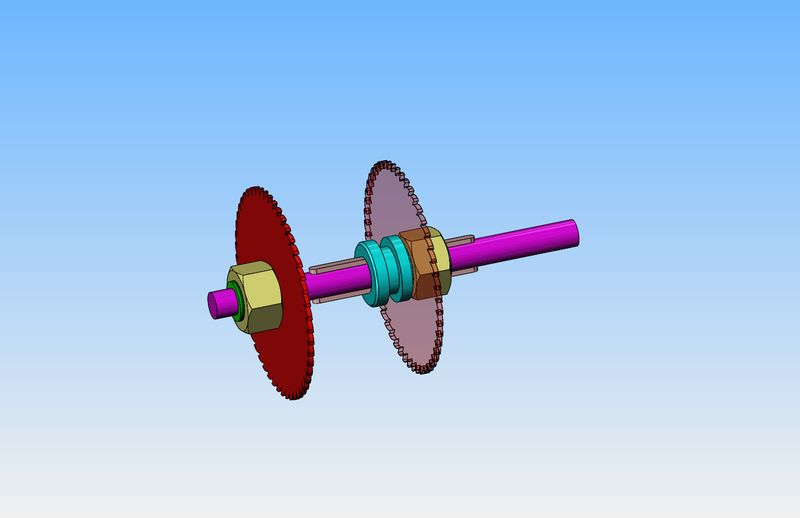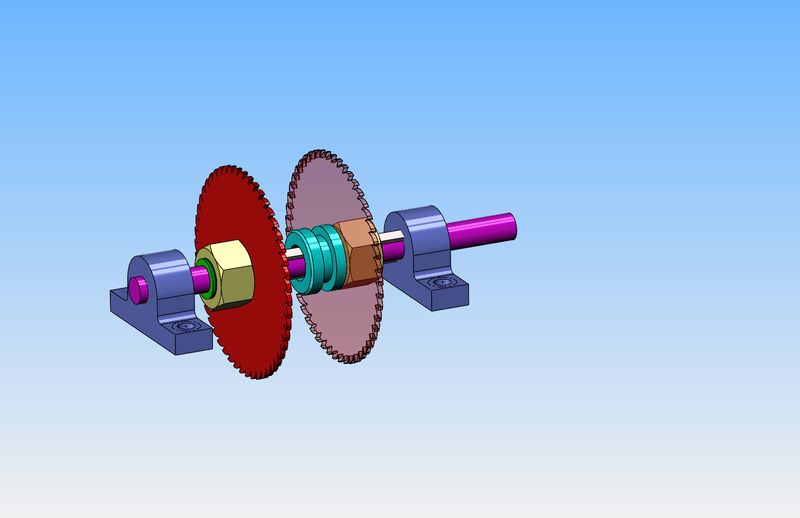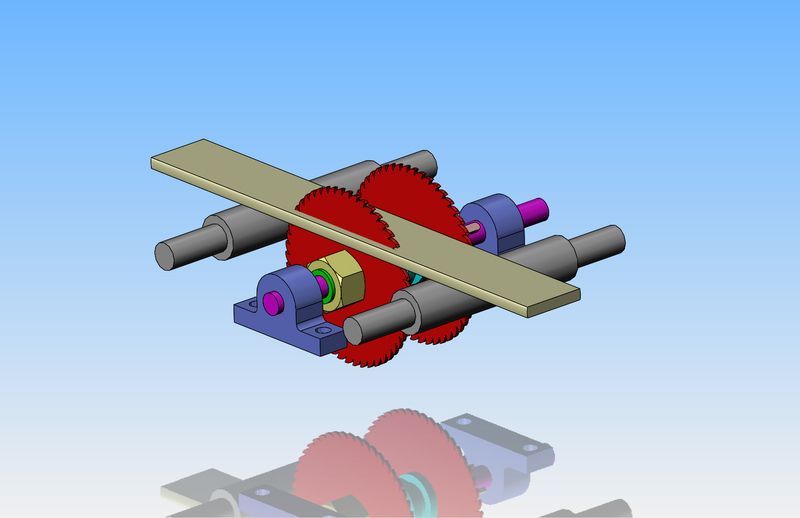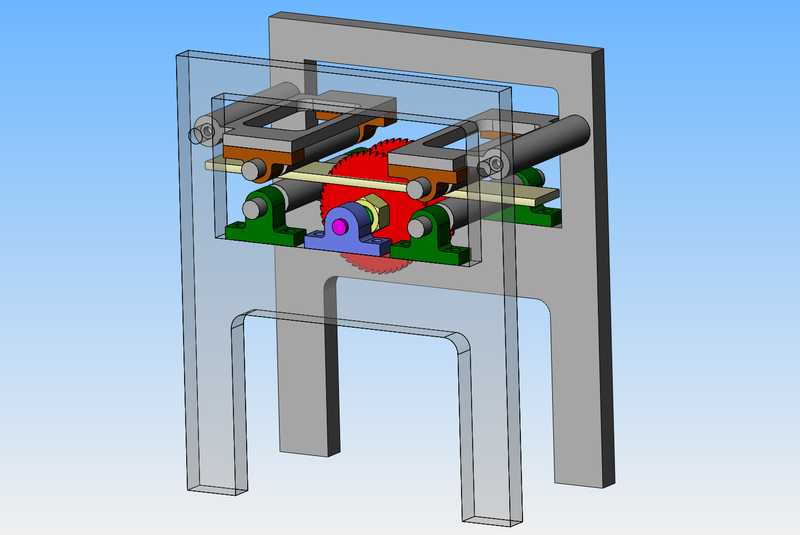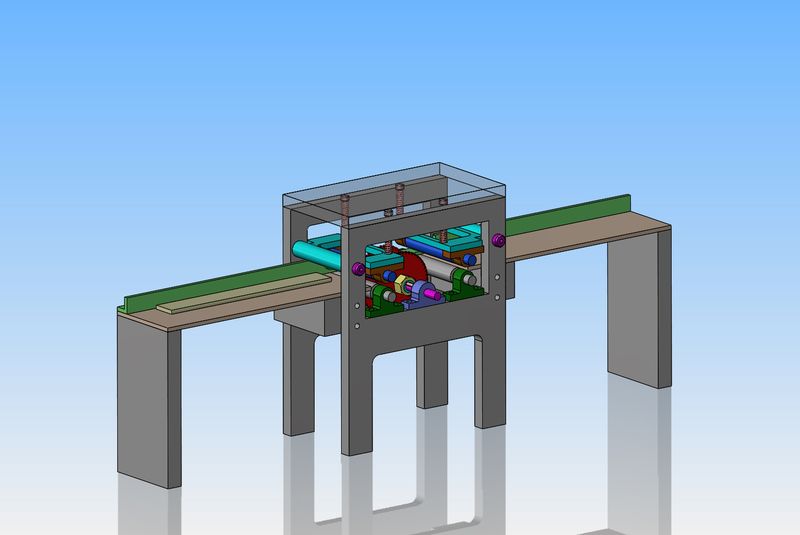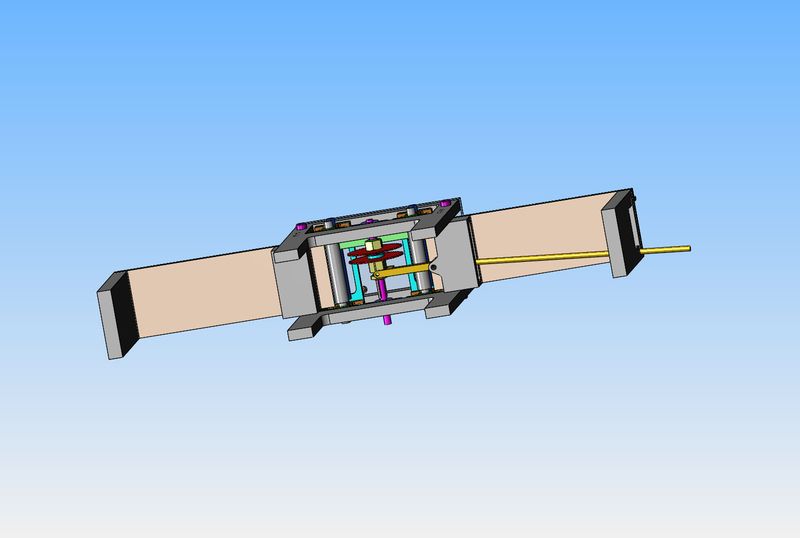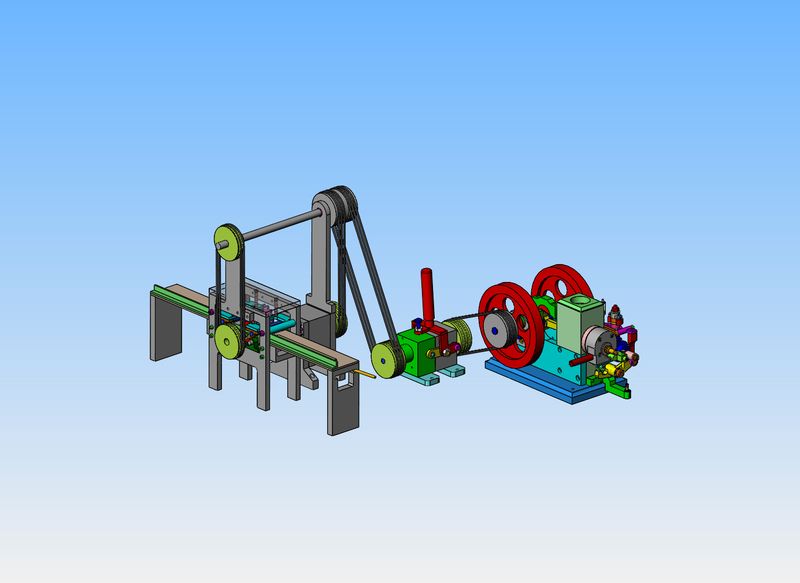I'm all "engined out". I've been thinking about something to build and run with one of my engines. I already have a sawmill, a buzz saw, a steam donkey winch, a drag saw and a wood splitter. I have been thinking of an edger. Once a log has went thru the main-saw in a sawmill, the resulting boards have bark on the outer edges. This requires a second cut to be made to remove the strip on each side of the board which are known as "edgings". Old school edgers had two sawblades on a common shaft. One sawblade was "fixed" in position, while the other sawblade could be moved on the shaft to accommodate different board widths. They also had powered pressure rolls on the outfeed and infeed to draw the uncut board into the saws and to feed it out the other side when the cut was finished. A later development were "Bull-Edgers" which had multiple blades with spacers between them, so a wide board could be fed in and finish size narrower boards and two "edgings" would come out. The edgings on each side fell down onto a conveyor that took them to the chipper, while the boards passed on thru to the sorting shed to be sorted, graded, and stacked to dry. I think that one of the old style edgers might be fun to build. The blade on my buzz saw is about 3 3/8" diameter and I can cut "logs" of 1" diameter into stovewood lengths. (about 1 1/2" long). I want to do a bit of research and see if there are blades about 2" in diameter.--I could probably use slitting saws intended for metal work.
http://bbs.homeshopmachinist.net/threads/56666-Model-Sawmill-Dreaming?highlight=sawmill
http://bbs.homeshopmachinist.net/threads/65982-Buzz-Saw?highlight=sawmill
http://bbs.homeshopmachinist.net/threads/65855-Model-Woodsplitter?highlight=sawmill
http://bbs.homeshopmachinist.net/th...am-Donkey-Engine?highlight=donkey+steam+winch
http://bbs.homeshopmachinist.net/threads/77077-Building-a-model-Drag-Saw?highlight=drag
http://bbs.homeshopmachinist.net/threads/56666-Model-Sawmill-Dreaming?highlight=sawmill
http://bbs.homeshopmachinist.net/threads/65982-Buzz-Saw?highlight=sawmill
http://bbs.homeshopmachinist.net/threads/65855-Model-Woodsplitter?highlight=sawmill
http://bbs.homeshopmachinist.net/th...am-Donkey-Engine?highlight=donkey+steam+winch
http://bbs.homeshopmachinist.net/threads/77077-Building-a-model-Drag-Saw?highlight=drag
Last edited:





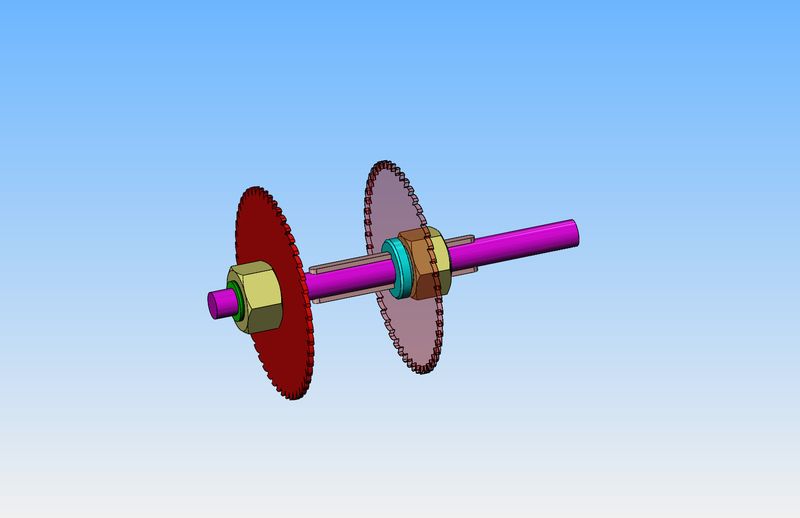





















































![DreamPlan Home Design and Landscaping Software Free for Windows [PC Download]](https://m.media-amazon.com/images/I/51kvZH2dVLL._SL500_.jpg)






